What is in a day at the King Sejong station..
It is not easy to write a blog from Antarctica... Everyone wants to hear exciting things, see amazing photos. It is amazing, yes.. The glaciers around. Our iceberg melting and turning but not going away. Cloud shapes.. Sometimes repeating the shape of our iceberg..
But everything, including the icebergs, becomes a routine. And the iceberg is there whatever we do. Work is nonstop – checking the weather forecast, measuring, sampling, preparing sensors, testing them, installing, launching radiosondes, studying the profiles, checking cloud height, writing notes, saving data, plotting and checking results, disinfecting sampling material, again sampling, measuring… I will try to tell a bit about our daily routing – let’s see if you stay with me until the end without pretty photos:)
Our day today started “unusually” – with a lake sensor testing in our so called “Dry Lab”.
Photo: Testing lake sensor in the Dry Lab. ©Irina Gorodetskaya
Photo: Weather forecast for the day (we use public 3-hourly forecasts provided by ECMWF and nicely displayed by windy.com). You can check the forecasts for King Sejong location.
Usually we start our day with a launch of a meteorological balloon (radiosonde) at 8AM local time. But today we postponed this fun until it is more fun – just before the rain&snow - to measure the clouds that give birth to the mixed-phase precipitation. The problem is that this rain&snow started earlier than it was forecasted.. Plus we were also delayed by the fire drill at 14h.
Photo: gathering outside the station for the fire drill – separate groups with the wintering team (taking care of the station) and summer-season scientists. ©Irina Gorodetskaya
After the drill we went to make a test-installation of the lake sensor measuring snowfall (from British Antarctic Survey) that we tested yesterday and this morning in the lab. We are going to install it at a bigger lake on Friday and today wanted to test data recording and transmission and to catch the rain and snow nearby our precipitation radar. But the rain caught us earlier… We had to pause our installation, bring the equipment inside the meteorological observatory and prepare and launch a radiosonde with a cloud sensor.
Photos: Preparing radiosonde and cloud sensor measuring the amount of liquid water content in clouds and launching them with a meteorological balloon. ©Irina Gorodetskaya
The launch went nicely and the profile was very interesting with several layers of clouds, warm inversions and dry layers.
Photo: Radiosonde profile from today's launch.
Rain paused in the meantime so we rushed to continue our lake sensor installation before the rain starts again. And then it started again and strong.. As graupel and a wet snow changing into rain.. Getting wet and cold we decided to finish the installation to capture this event. To avoid getting the connectors wet, I got under a big plastic bag. When everything was well connected, we threw the sensor into the lake… And an hour later received a message from British Antarctic Survey, that all was fine, the sensor is measuring and the data are transmitted via Iridium antenna all the way to Cambridge.
Photos: Installing the lake sensor under the rain.. The sensor is a small device measuring water pressure inside the lake which is then converted to snowfall and rainfall amounts (the sensor is developed by Hamish Pritchard for measuring snowfall in the difficult to access mountain&polar regions). Photos©Yosvany Garcia
The rain&snow mixed dance continued and keeping an eye on our MRR-PRO radar profiles, I went with precipitation sampling – we collect rain and snow for stable water isotopes and also to see their microbial content. It is like reading the stories of the water that travels from far away and brings its own memories (which we can understand using isotopes telling us where the water originated, which path it took before reaching Antarctica, and at which temperatures precipitation formed, and are a powerful tool in past climate reconstructions) and friends (various micro-worlds.. which can be bacteria, archaea, fungi..), which can play an important role in cloud formation.
Photo: Precipitation profile measured by MRR-PRO.
Finished sampling just before dinner and as always passed by our iceberg to waive a good day/evening/night.. It is changing its shape every day, losing its grandeur and now looking small but still remembering how once it was part of a big magnificent glacier..
Photo: Our iceberg this evening on 22 February.. ©Irina Gorodetskaya
Work continues after dinner (which is from 18 to 19h local time). Preparing for the retrieval of oceanographic sensors, disinfecting the funnels for precipitation sampling, analyzing today’s data and forecast for tomorrow.. But that’s for another postJ
For those who stayed with me until the end.. here is a little penguin, our magnificent iceberg, and that envy we have for the birds – free to fly in the night sky..
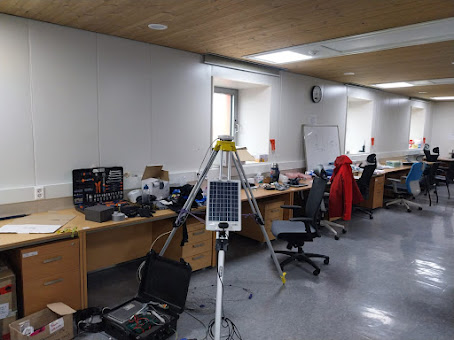

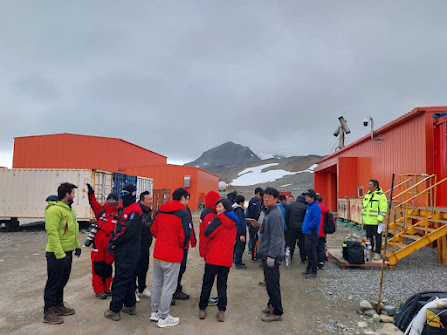






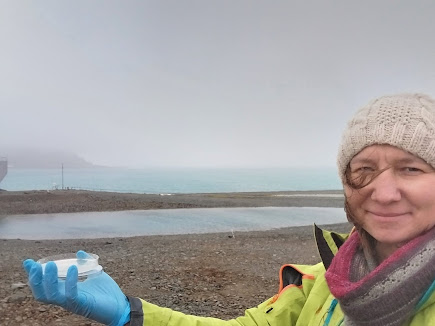






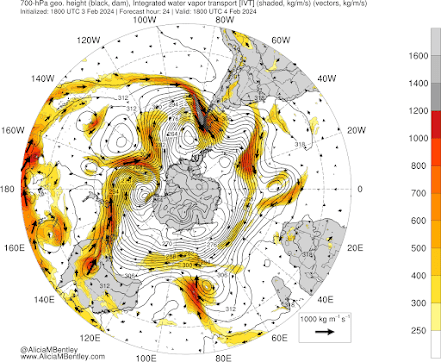
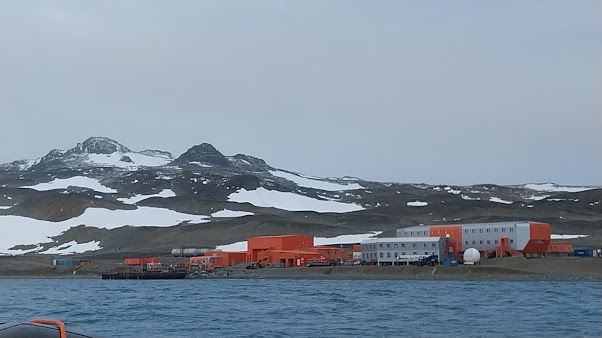
Comments
Post a Comment